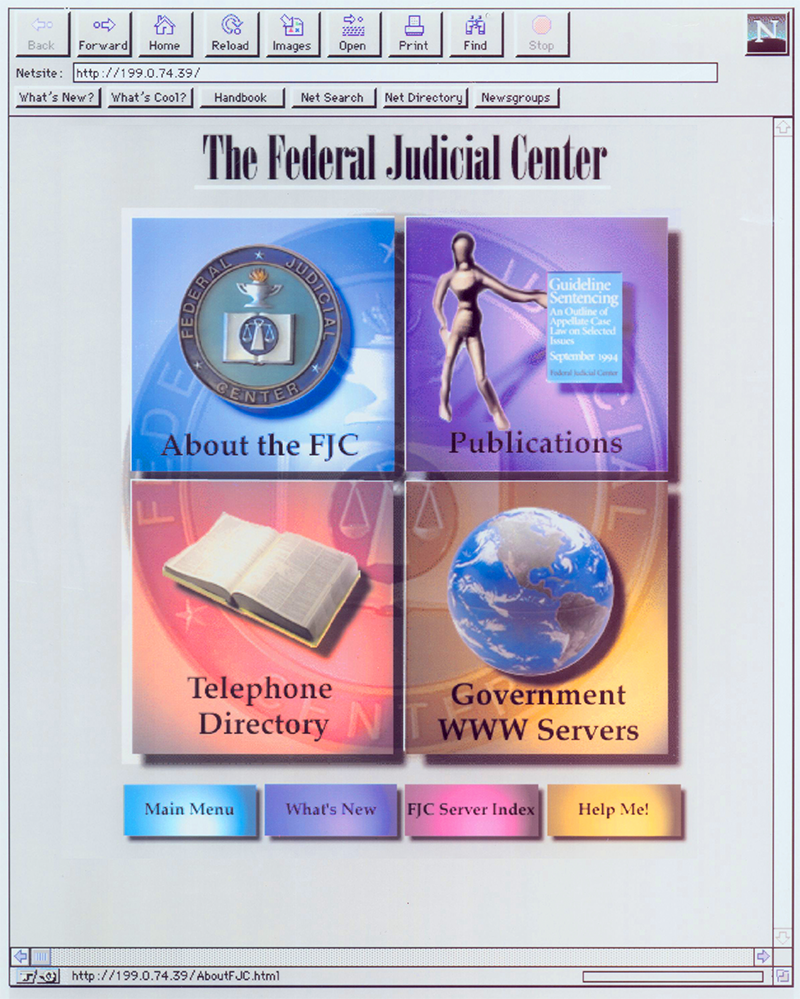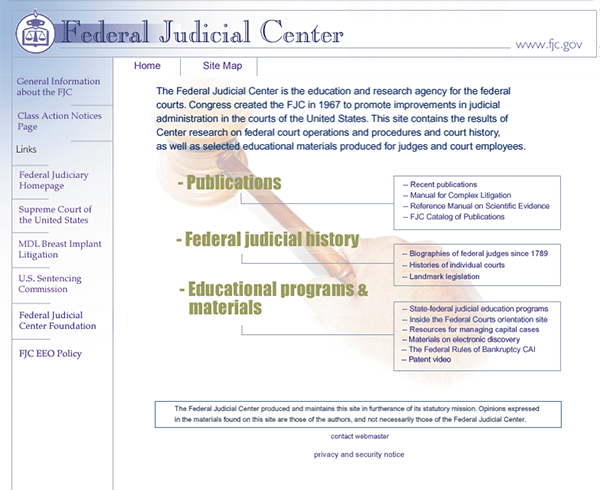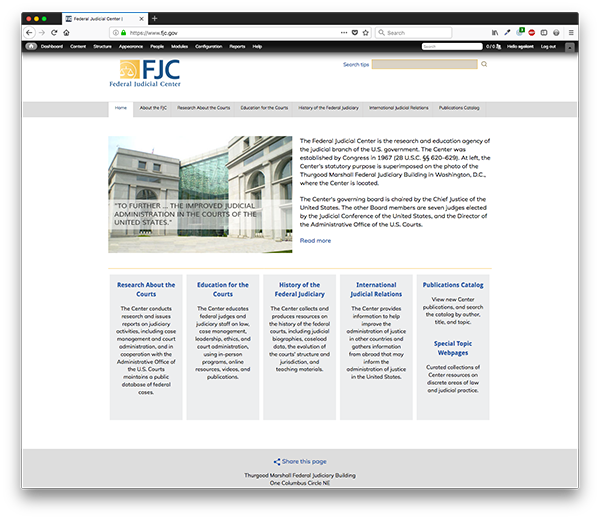You are here
Federal Judicial Center Celebrates 50 Years
FJC.gov
The Center's First Internet Website, July 1995

On August 29, 1995, the Washington Post ran an article covering government websites. The article mentioned the Center's site and included an image of the homepage.
WASHINGTON POST:
During the past year, many federal departments and agencies have opened up shop on the World Wide Web. Web sites present a wide variety of Internet information in an easy-to-read, multimedia format and many users gather data by skipping from one site to another. Executive branch agencies currently rule the federal Web, offering vast repositories of data and sophisticated graphics. Click on the White House Web site, for example, and you can take a tour of 1600 Pennsylvania Avenue without the hassle of waiting in line. Congress has two Web sites: The U.S. House of Representatives Home Page, a repository of legislation and congressional documents; and "Thomas," introduced by House Speaker Newt Gingrich (R-Ga.). The Senate is hooked up to the Internet but so far has no Web site, although one is planned for the fall. Users will not find a one-stop government Web site for the federal courts, but nongovernmental sources offer court records. The following summarizes what is available for each branch of the federal government and lists other executive branch sites to sample.
JUDICIARY COURTS
http://www.uscourts.gov
http://www.fjc.gov
Plans for a Supreme Court Web site are barely on the horizon, although the court will make its opinions available via a dial-in computer bulletin board in October. The court already electronically transmits its opinions to paid subscribers, which include many law schools. The Administrative Office of the U.S. Courts and the Federal Judicial Center offer general information about the court system. And several law schools, including Cornell, Villanova and Emory, have Web sites that make available Supreme Court decisions as well as information from a smattering of circuit courts.

The Center Internet Website, December 1995
The site was edited shortly thereafter to include Education Programs and Court-Related Links, replacing the Telephone Directory and Government WWW Servers.

The Center Internet Website, 2001

In 2001, the Center added the following sections to its website:
- Science and technology
- Management skills for federal courts in uncertain times
- Demystifying the legal process
- International judicial cooperation
FJC.gov, 2017

In 2017, the website was upgraded on several fronts. It was made fully mobile for the first time, allowing users to browse and download materials on their cell phones or iPads in addition to computers and laptops. Content has become more interactive: for example, researchers can conduct customized searches of databases of court case data or judiciary demographics, and results can, in some instances, be downloaded. The content is also shareable via email and social media platforms. The Federal Judicial History section, popular with the website’s users, was upgraded to contain a timeline that allows users to move through history to learn about major developments in case law and judicial administration. The website redesign, which took over a year to complete, was the first since the early 2000s.

